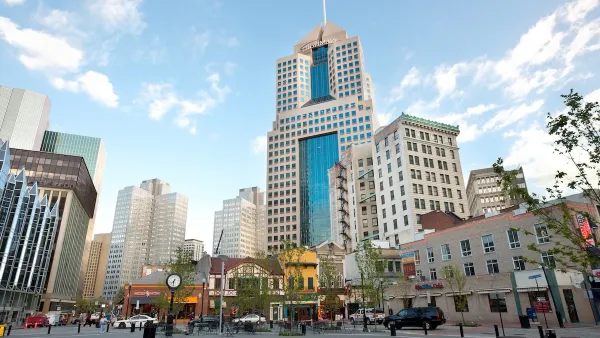A garden in Pittsburgh has become the model for a movement to combine environmental reclamation with economic development.
The long-abandoned coal mine where the Pittsburgh Botanic Garden now sits was not, at first, considered a high priority for rehabilitation. Though plagued by high concentrations of aluminum in its central pond, the site didn't meet the criteria to be classified as "brownfield."
But now the garden is one beneficiary of a new $30 million state grant program that is taking a different approach to environmental remediation: targeting sites that have the greatest potential for economic development, rather than the greatest ecological need. Where reclamation programs have traditionally sought to "simply restore damaged land to its original condition and eliminate public health hazards," a 2016 Congressional authorization allowed states like Pennsylvania to put clean-up funds toward community development projects on the site.
The botanic garden, which serves 25,000 visitors a year, is one of 14 pilot projects throughout Pennsylvania to receive this funding. An underground treatment system to de-acidify the pond has already been implemented, and the grant monies will be used to create new curated gardens and recreational areas for public access.
FULL STORY: Where coal was once mined, a garden now thrives

National Parks Layoffs Will Cause Communities to Lose Billions
Thousands of essential park workers were laid off this week, just before the busy spring break season.

Retro-silient?: America’s First “Eco-burb,” The Woodlands Turns 50
A master-planned community north of Houston offers lessons on green infrastructure and resilient design, but falls short of its founder’s lofty affordability and walkability goals.

Delivering for America Plan Will Downgrade Mail Service in at Least 49.5 Percent of Zip Codes
Republican and Democrat lawmakers criticize the plan for its disproportionate negative impact on rural communities.

Test News Post 1
This is a summary

Test News Headline 46
Test for the image on the front page.

Balancing Bombs and Butterflies: How the National Guard Protects a Rare Species
The National Guard at Fort Indiantown Gap uses GIS technology and land management strategies to balance military training with conservation efforts, ensuring the survival of the rare eastern regal fritillary butterfly.
Urban Design for Planners 1: Software Tools
This six-course series explores essential urban design concepts using open source software and equips planners with the tools they need to participate fully in the urban design process.
Planning for Universal Design
Learn the tools for implementing Universal Design in planning regulations.
EMC Planning Group, Inc.
Planetizen
Planetizen
Mpact (formerly Rail~Volution)
Great Falls Development Authority, Inc.
HUDs Office of Policy Development and Research
NYU Wagner Graduate School of Public Service





























